As I keep stepping over this problem in one form or the other again and again, I decided to write a function gradient_n, which adds an differentiation oder functionality to np.gradient. Not all functionalities of np.gradient are supported, like differentiation of mutiple axis.
Like np.gradient, gradient_n returns the differentiated result in the same shape as the input. Also a pixel distance argument (d) is supported.
import numpy as np
def gradient_n(arr, n, d=1, axis=0):
"""Differentiate np.ndarray n times.
Similar to np.diff, but additional support of pixel distance d
and padding of the result to the same shape as arr.
If n is even: np.diff is applied and the result is zero-padded
If n is odd:
np.diff is applied n-1 times and zero-padded.
Then gradient is applied. This ensures the right output shape.
"""
n2 = int((n // 2) * 2)
diff = arr
if n2 > 0:
a0 = max(0, axis)
a1 = max(0, arr.ndim-axis-1)
diff = np.diff(arr, n2, axis=axis) / d**n2
diff = np.pad(diff, tuple([(0,0)]*a0 + [(1,1)] +[(0,0)]*a1),
'constant', constant_values=0)
if n > n2:
assert n-n2 == 1, 'n={:f}, n2={:f}'.format(n, n2)
diff = np.gradient(diff, d, axis=axis)
return diff
def test_gradient_n():
import matplotlib.pyplot as plt
x = np.linspace(-4, 4, 17)
y = np.linspace(-2, 2, 9)
X, Y = np.meshgrid(x, y)
arr = np.abs(X)
arr_x = np.gradient(arr, .5, axis=1)
arr_x2 = gradient_n(arr, 1, .5, axis=1)
arr_xx = np.diff(arr, 2, axis=1) / .5**2
arr_xx = np.pad(arr_xx, ((0, 0), (1, 1)), 'constant', constant_values=0)
arr_xx2 = gradient_n(arr, 2, .5, axis=1)
assert np.sum(arr_x - arr_x2) == 0
assert np.sum(arr_xx - arr_xx2) == 0
fig, axs = plt.subplots(2, 2, figsize=(29, 21))
axs = np.array(axs).flatten()
ax = axs[0]
ax.set_title('x-cut')
ax.plot(x, arr[0, :], marker='o', label='arr')
ax.plot(x, arr_x[0, :], marker='o', label='arr_x')
ax.plot(x, arr_x2[0, :], marker='x', label='arr_x2', ls='--')
ax.plot(x, arr_xx[0, :], marker='o', label='arr_xx')
ax.plot(x, arr_xx2[0, :], marker='x', label='arr_xx2', ls='--')
ax.legend()
ax = axs[1]
ax.set_title('arr')
im = ax.imshow(arr, cmap='bwr')
cbar = ax.figure.colorbar(im, ax=ax, pad=.05)
ax = axs[2]
ax.set_title('arr_x')
im = ax.imshow(arr_x, cmap='bwr')
cbar = ax.figure.colorbar(im, ax=ax, pad=.05)
ax = axs[3]
ax.set_title('arr_xx')
im = ax.imshow(arr_xx, cmap='bwr')
cbar = ax.figure.colorbar(im, ax=ax, pad=.05)
test_gradient_n()



